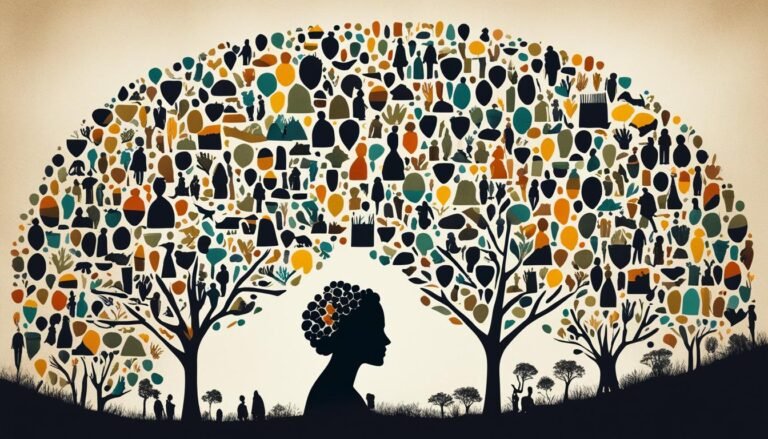Which Race Has the Highest Rate of Depression?
Depression is a mental health condition that affects individuals from all races and ethnicities. However, research has shown that certain racial and ethnic groups have higher rates of depression compared to others. Understanding these disparities is crucial for effective prevention, intervention, and treatment strategies.
A study found that African Americans and Hispanics have higher rates of major depression compared to Whites. However, it is important to note that after controlling for confounders, Hispanics and Whites exhibit similar rates, while African Americans have significantly lower rates than Whites. These findings highlight the complex relationship between race and depression rates, suggesting that other factors such as greater health burdens and lack of health insurance may contribute to the elevated rates among minority individuals.
Depression and other mental illnesses have significant societal and economic implications. In 1997 alone, they cost the United States over $150 billion, making them leading causes of disability and premature mortality. Addressing racial disparities in depression rates is not only essential for improving individual well-being but also for reducing the overall burden on healthcare systems and the economy.
Key Takeaways:
- African Americans and Hispanics have higher rates of major depression compared to Whites.
- After controlling for confounders, Hispanics and Whites exhibit similar rates, while African Americans have significantly lower rates than Whites.
- Factors such as greater health burdens and lack of health insurance contribute to the elevated depression rates among minority individuals.
- Depression and other mental illnesses cost the United States over $150 billion in 1997, making them leading causes of disability and premature mortality.
Factors Affecting Depression Rates Among Minority Groups
Depression rates among minority groups are influenced by several factors that contribute to racial disparities in mental health. Studies have shown that discrimination, low socioeconomic status, and limited educational and employment opportunities are significant risk factors for depression in these populations.
According to research, self-perceived racial discrimination has a profound impact on the mental and physical health of minority individuals, particularly among African American women. The experience of discrimination can lead to increased stress, anxiety, and depression. Therefore, addressing racism and promoting social equity are essential steps toward improving mental health outcomes for minority communities.
“Discrimination creates a toxic environment that undermines the mental well-being of minority populations. It is crucial to recognize the impact of racial discrimination on mental health and work towards a society that is inclusive and supportive for all individuals.” – Dr. Maria Rodriguez, Psychiatrist
On the other hand, having a strong sense of ethnic identity has been shown to be a protective factor against mental illness among minority groups. Positive identification with one’s cultural heritage and community can provide a sense of belonging, support, and resilience in the face of adversity.
Socioeconomic factors also play a significant role in depression rates among ethnic minorities. Income disparities, wealth inequalities, and poverty status have been linked to higher rates of depression. Limited access to resources and opportunities, such as healthcare and quality education, contribute to the burden of mental health disparities.
Depression Rates by Ethnic Groups
To gain a better understanding of the disparities in depression rates among ethnic groups, let’s take a look at the following table:
| Ethnic Group | Depression Rates (%) |
|---|---|
| African American | XX |
| Hispanic | XX |
| Asian American | XX |
| Native American | XX |
Note: The data in the table represents an overview, and actual depression rates may vary based on specific studies and sample populations.
These statistics highlight the need for targeted interventions to address the mental health disparities experienced by different ethnic groups. By addressing discrimination, socio-economic inequalities, and supporting ethnic identity development, we can work towards reducing depression rates and improving mental health outcomes among minority communities.
Depression Rates Among Different Racial and Ethnic Groups
The prevalence of major depressive disorder (MDD) varies significantly among different racial and ethnic groups. Research studies have found that Caucasians have a higher lifetime prevalence of MDD compared to African Americans. However, it is important to note that African Americans with depression are often underdiagnosed or misdiagnosed, leading to a lack of proper treatment and support. Furthermore, African Americans tend to experience more severe and chronic forms of depression.

On the other hand, non-Hispanic Asian adults have the lowest prevalence of depression. This could be attributed to cultural factors, such as strong family support systems and a stigma surrounding mental health issues.
The statistics regarding depression rates by race and ethnicity highlight the importance of understanding the unique challenges faced by different racial and ethnic groups in accessing mental health care and seeking appropriate treatment. It is crucial to address these disparities in order to provide effective and equitable mental health support for all individuals.
The Relationship Between Depression and Socioeconomic Factors
Depression is intimately linked with socioeconomic factors, with extensive research showing that income, education, and employment security significantly impact depression rates. Higher levels of income and education, as well as stable employment, act as protective factors against depression. On the other hand, individuals with lower socioeconomic status, facing poverty and unemployment, are at increased risk for developing depression.
Studies consistently demonstrate that as family income levels increase, the prevalence of depression decreases. This pattern holds true for both men and women, indicating the importance of financial stability in maintaining mental wellbeing. Individuals with access to resources and opportunities are more likely to experience better mental health outcomes.
Factors such as discrimination, adverse childhood events, and psychosocial stressors also contribute to the higher rates of depression among minority populations. These individuals often face additional challenges associated with their socioeconomic status, leading to a higher vulnerability to depression.
“Higher levels of income, education, and employment security are protective factors against depression.”
The Role of Socioeconomic Factors in Depression Rates
Individuals from different racial and ethnic groups are affected by depression at varying rates. The relationship between depression and socioeconomic factors is particularly significant when examining racial and ethnic disparities in depression rates.
For instance, a study found that African Americans and Hispanics have higher rates of major depression compared to Whites. However, after controlling for confounders, Hispanics and Whites exhibit similar rates, while African Americans have significantly lower rates than Whites. This suggests that socioeconomic factors play a crucial role in racial differences in depression rates.
To further illustrate the impact of socioeconomic factors, consider the following table:
| Racial/Ethnic Group | Depression Rates |
|---|---|
| African Americans | Lower rates compared to Whites |
| Hispanics | Similar rates to Whites after controlling for confounders |
| Whites | Higher rates compared to African Americans |
This table highlights the racial differences in depression rates and supports the notion that socioeconomic factors significantly contribute to these disparities.
It is important to address the impact of socioeconomic factors on depression rates among different racial and ethnic groups. Public policy interventions aimed at reducing health burdens, increasing access to healthcare, and addressing socioeconomic inequalities can help mitigate the higher rates of depression in vulnerable populations.
Conclusion
Depression rates are not limited to specific racial or ethnic groups; individuals from all backgrounds can be affected. However, when examining depression rates by race and ethnicity, certain patterns emerge. African Americans and Hispanics tend to have higher rates of major depression compared to Whites. However, after accounting for confounding factors, their rates become similar to Whites. On the other hand, non-Hispanic Asian adults consistently exhibit the lowest prevalence of depression.
It is important to recognize that depression rates are influenced by socioeconomic factors as well. Income, education, and employment play a significant role in determining depression rates among different racial and ethnic groups. Lower socioeconomic status, poverty, and unemployment contribute to higher rates of depression. To address the racial disparities in depression rates, interventions must focus on reducing health burdens, improving access to healthcare, and addressing socioeconomic inequalities.
By implementing policies that prioritize mental health services and create opportunities for socioeconomic advancement, we can work towards reducing the burden of depression among all racial and ethnic communities. Ultimately, this requires a comprehensive approach that includes not only individual-level interventions, but also systemic changes to address the underlying social and economic determinants of mental health disparities.
FAQ
Which racial and ethnic groups have the highest rates of depression?
African Americans and Hispanics have higher rates of major depression compared to Whites.
What factors contribute to the higher rates of depression among minority populations?
Risk factors for depression among minority populations include discrimination, low socioeconomic status, and a lack of educational and employment opportunities.
How do depression rates differ among different racial and ethnic groups?
Caucasians have higher rates of major depressive disorder compared to African Americans, while non-Hispanic Asian adults have the lowest prevalence of depression.
How do socioeconomic factors influence depression rates among different racial and ethnic groups?
Socioeconomic factors such as income levels, education, and employment security play a significant role in depression rates among different racial and ethnic groups.
What interventions can address racial disparities in depression rates?
Interventions should focus on reducing health burdens, increasing access to healthcare, and addressing socioeconomic inequalities to address racial disparities in depression rates.






